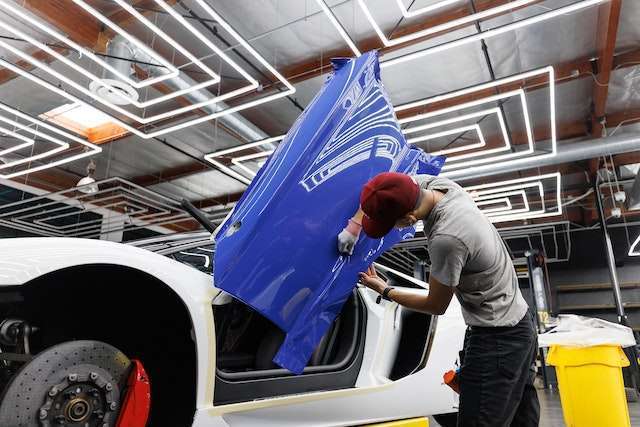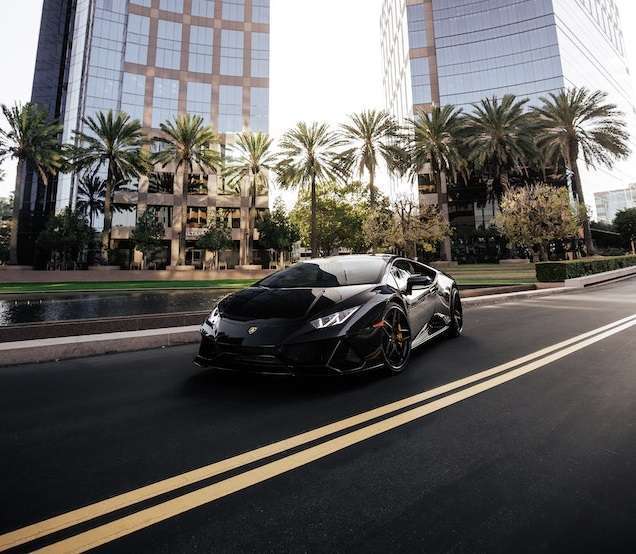Is paint protection film worth it?
The paint protection market is worth an estimated $280.18 million USD, showing that paint protection film successfully protects your vehicle. There are several types of paint protection solutions you can choose from.
In particular, there is PPF and vinyl wrap. Let’s discuss what each one is and the pros and cons of each option.
PPF vs. Vinyl Wrap: What’s the Difference?
Most believe that PPF is the same as vinyl, only that PPF is transparent. Therefore, the two are completely different products.
Ordering a paint protection film in Charlotte, NC, means you are focusing exclusively on protection. Paint protection film is the best way to protect your vehicle from any of the debris you may encounter on the road.
Vinyl wraps are designed to add a custom style to your vehicle. They offer less protection but are better if you want to alter the look of your car.
Material
The nature of PPF means that it needs to be completely transparent, flexible, and strong. High-quality PPF is made from polyurethane because it possesses all of these capabilities.
On the other hand, vinyl wraps are made from a substance known as polyvinyl chloride. Compared to the strength of PPF, vinyl wraps are relatively brittle.
Vinyl wraps are made from polyvinyl chloride because they can be dyed in any color you like with any finish you want. Vinyl wraps are ideal for finishes like gloss, matte, and reflective coatings. Vinyl wraps can also be applied to swoops, curves, and any other awkward parts of your vehicle.
Thickness/Durability
The “mil” is the unit used to denote the thickness of a material within the automotive wraps industry. A single mil is a one-thousandth of an inch in size. To put it into perspective, a credit card is 30 mils in thickness, whereas a single newspaper page would be 2.5 or 3.5 mils.
With that in mind, choosing the right automotive wrap is critical to protecting your paint job.
If choosing PPF, the biggest consideration is how resistant it is to impact damage and scratches. PPF is thicker than the average vinyl wrap, but there is considerable variation between manufacturers. Most PPF ranges between 6 and 10 miles. When applied to an entire vehicle, PPF can change the weight of your vehicle by up to 10 pounds.
Realistically, PPF is only applied to your vehicle’s vulnerable areas, which means the weight gain will be much less.
Vinyl wraps are much thinner and don’t offer the same level of protection as a dedicated PPF application. In addition, since vinyl wraps are usually applied to the entire vehicle area, you can expect it to add up to six pounds of weight.
Customization Options
Choosing PPF means you also choose where to apply the film. Typically, most auto owners only add it to the most vulnerable areas of their vehicle. Since it’s completely transparent, investing in a whole vehicle wrap rarely makes sense.

A professional will use different films to preserve your paint’s finish, whether it’s glossy or matte.
Vinyl wraps have more customization options because they are designed to alter the look of your vehicle. You can even use vinyl to add custom designs and logos, an increasingly popular option among businesses.
Installation and Maintenance Considerations
PPF installation can happen on the same day. Some shops may ask you to leave your vehicle overnight, but this isn’t the standard.
Full vinyl wraps are more complicated to install by nature, meaning you may have to leave your car with the shop for up to a week. Unfortunately, there is no getting around this. The procedure is highly labor-intensive to get the finish you desire.
Following your PPF or wrap, you can clean your car as you would normally. Both options are capable of standing up to washing, drying, and waxing. It’s recommended that you clean your vehicle regularly because it keeps PPFs and vinyl wraps in top condition.
One of the advantages of PPF is that some of the more innovative products are self-healing. Any scuffs or scratches you discover on your PPF can be removed by applying heat. Waxing is not required.
On the other hand, there are more maintenance concerns with vinyl wrap. You need to be aware that regular waxing is essential to maintaining the hydration and flexibility of your films.
What are the Differences in Price?
Cost is always a major consideration when working with PPF or vinyl. PPF is more expensive than vinyl wrap because of the amount of protection it provides. However, a car with PPF has a unique selling point that can add value to the sales price.
Vinyl wraps vary based on how much customization is involved. The truth is that vinyl wrap can either be cheaper or more expensive than PPF.
For example, if you opt for lots of wacky colors, logos, and designs, you can expect to pay thousands of dollars to have your whole vehicle wrapped.
How Much Prep is Required?
Any chips must be fixed before applying PPF. The same goes for the vinyl wrap. Both types of wrap will only accentuate any existing chips. It’s why any good professional will inspect your vehicle for signs of damage before applying PPF or vinyl wrap.
On the other hand, scratches don’t need to be fixed if applying vinyl wrap because it’s opaque and will hide any existing scratches. However, the surface must be smooth before adding a vinyl wrap.
Warranty
Vinyl wraps will typically come with a warranty of five years. PPF can come with warranties of up to 12 years. The lifespan largely depends on the condition of your vehicle before getting it wrapped.
Any repainted parts of your car could reduce the lifespan of your PPF or vinyl wrap. Over time, there is a tendency for wraps to begin to lift the paint if the job isn’t completed correctly.
Conclusion
PPF is the ultimate protection solution for anyone who wants to defend their car’s paint job. Vinyl wrap will also offer a limited amount of protection, but its primary purpose is to alter the appearance of your vehicle.
Do your research and speak to a professional who can advise you further on what might be best for your vehicle.



